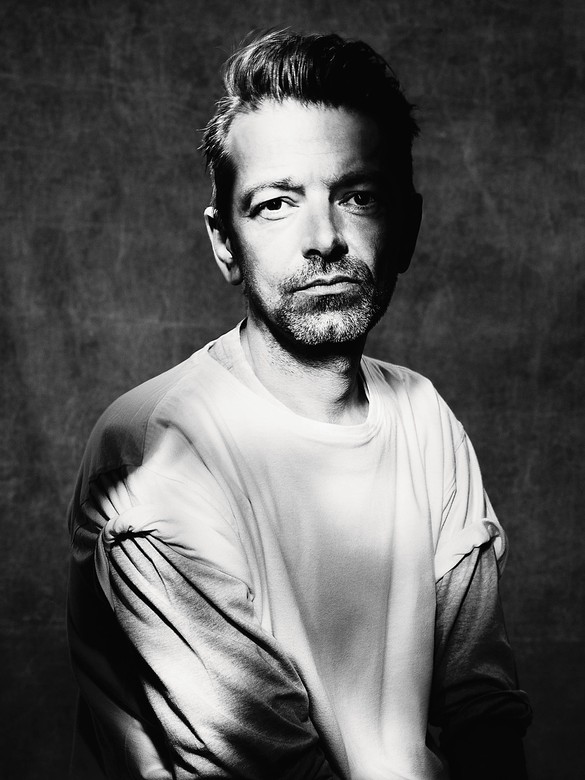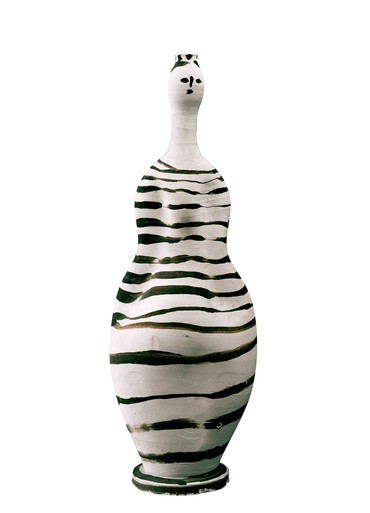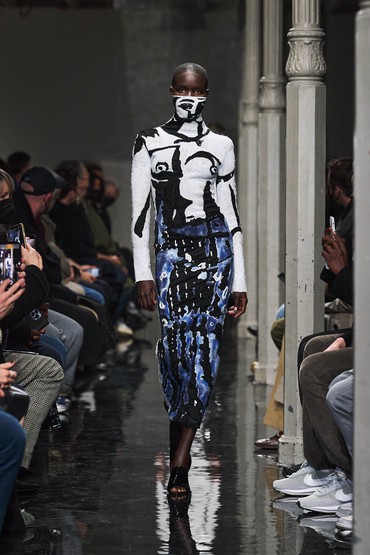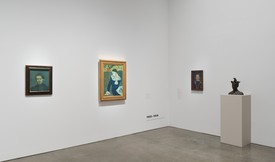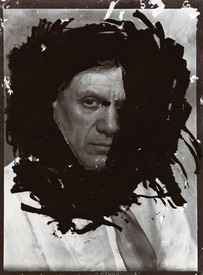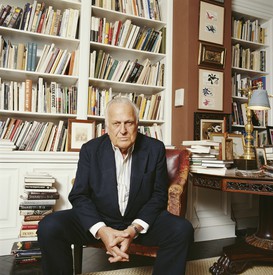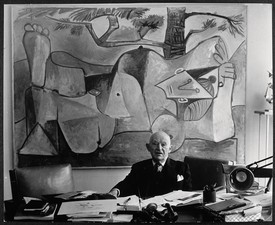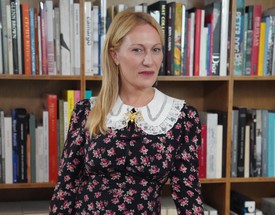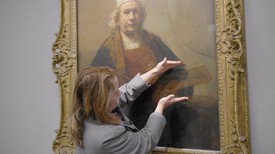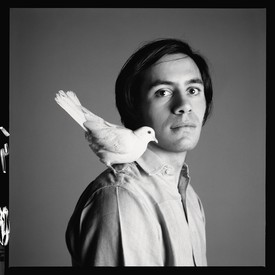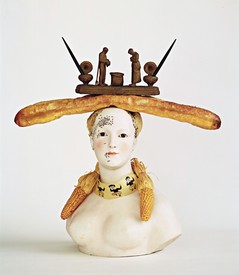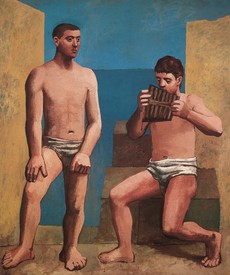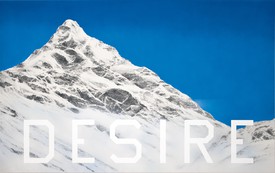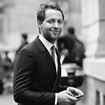
Derek Blasberg is a writer, fashion editor, and New York Times best-selling author. He has been with Gagosian since 2014, and is currently the executive editor of Gagosian Quarterly.
Derek BlasbergI’m sad I missed your first collection, in the summer of 2021. But I have a good excuse: my twins had just been born.
Pieter MulierThat is a good excuse.
DBBut I watched the show online and I thought it was incredible. How was it for you?
PMI was very stressed, but I wasn’t afraid, and that combination was a good thing. Actually, the first collection was easy because it was about putting the Alaïa codes back on the map. The second collection was more difficult.
DBThat’s the one that was presented in January of 2022. Why more difficult?
PMBecause I want to slowly build a new creative map. So I began to install new codes, and what I’ll want to say, and then there’ll be more in the third collection.
DBThis is how you slowly inject yourself into the house of Alaïa.
PMYes. And it will come gradually, the way everything does in this house. Everything takes time and is built on a creative map. But after that second show I was dead.
DB[Laughs]
PMI was really dead. We’re such a small house. I have a studio of only three people, three creative people who do everything.
DBThat’s only six hands!
PMThe size of the atelier is also its beauty. This is why I came here, because it’s small, it’s human, it has relevance to it. Honestly, after the initial waves of COVID and after [my jobs at Calvin Klein and Christian Dior, both working with Raf Simons], I was actually ready to say goodbye to fashion. I was like, Okay, it doesn’t interest me anymore. I mean, you must think the same thing sometimes, that this industry has became a circus, blah, blah. It’s changed so much in the last five years.
DBAbsolutely. But what else am I going to do? Ha!
PMWhen [Richemont, the owners of Alaïa] called me, I was like, Okay, at least there’s something relevant for me to do. It’s both one of the biggest and one of the smallest houses, and it has so much to say. That’s why I like it here: it’s human and we touch everything.
DBIn these conversations with fashion people we inevitably talk about the relationship between fashion and art. Your designs are inspired by Pablo Picasso’s ceramics this season—talk to me about how you landed on Picasso.
PMIt started two years ago. To be honest, I wanted to do it even before I signed the contract to work here. [In preparing for the job] I designed a full runway collection and I had at least ten silhouettes based on Picasso. The ceramics that we translated were in it because I always thought they were very Alaïa. Very Alaïa. Alaïa talks about silhouettes, it talks about feminine beauty, and there’s a roughness to it. In a lot of people’s minds, it’s like this übergoddess thing—there’s always a pagan quality to it, this rough vision of what feminine beauty is. And Picasso flushed that out, these impossible silhouettes that he built around bottles. For me, it’s about sculpture, and Alaïa is a sculptor. The biggest sculptor in fashion.
DBFor sure.
PMHe was. It was all about proportion. I thought it was beautiful to link the two.
DBIs it typical for you to have an art-world reference in your creative process?
PMYes. In the new collection, all the colorways are based on Sarah Lucas sculptures. But I’m not like my colleagues who do something identical to a reference. I don’t love that, when fashion does something so—
DBLiteral.
PMExactly. With Picasso it makes sense. It was also the only way we could do it with the Picasso estate, to make it as close as possible to the artwork. I thought about it for a long time. The ceramics are very elongated, so the interesting part of the project [for the estate] was to mix his vision on a real body, a feminine body.
Alaïa talks about silhouettes, it talks about feminine beauty, and there’s a roughness to it.
Pieter Mulier
DBI know you from your work before Alaïa, of course, including at Dior and Calvin Klein. Is your work with Picasso and Lucas and any other art influences a departure? Or something you’ve done in previous roles?
PMI often did it with Raf at Dior, especially with Sterling Ruby. But I was never the boss then, I was working for someone who did it, and actually did it well.
But I was educated about art through fashion, I discovered art through fashion. I knew art a little bit, but from the moment I worked in fashion, art was always the world that makes us dream, the world where everything is possible, whereas in fashion we think nothing is possible. Artists have full freedom and can do whatever they want.
DBI love that idea! In art, you can do something miniature or you can do a mural or a sculpture. Whereas in fashion, you need to be able to put it on a rack, or on a person. It’s harder to dream beyond the body.
PMYes, we’re physically limited, but also conceptually limited. Because at the base of everything, there’s turnover—we need to sell something. Artists also have to sell something, eventually, but they have the luxury of this romantic view of what an artist should be.
DBWould you want that view?
PMI don’t know. It’s quite a romantic view. I think it’s rare to be as free as that. But in a way, I have it here. Alaïa is a house with its own rules.
DBAzzedine [Alaïa] never did anything according to schedule, and he had his own retail strategy.
PMWe work with no merchandisers whatsoever. Although financial strategy is important, we don’t talk about it because it’s part of the DNA of the house. I’m not saying we’re creating art, but the house is built more like an artist’s studio than a fashion house. Which is actually quite interesting.
DBIt’s funny you say that because I was lucky enough to go to Mr. Alaïa’s house a couple of times when he was still alive, and he had more artists in there than fashion people! There would be Julian Schnabel, or Francesco Clemente, or—
PMYes! Julian was actually here yesterday. Azzedine was obsessed with everything creative. Also, he worked quite alone. It was one person—although he had a small atelier around him, everything came from his hand. He had obsessions the way an artist has obsessions with certain things.
DBI love that Schnabel still comes over. I guess artists are still intrigued by what’s happening at Alaïa, right?
PMThey still come, which I love. They still come to the atelier, to the fitting rooms. That’s very new to me, because normally a fitting room is behind closed doors. Here that’s not the case—people come, people go, and I quite like it. It feels more like a Bauhaus thing than a pretentious experience. I didn’t know Azzedine but I think that’s what he liked too, being inspired by everyone during dinners and lunches.
DBWhat’s fascinating about Alaïa is that so many people were close friends in his life, and they didn’t all speak the same language. Alaïa didn’t speak English, and so many of his friends—Naomi Campbell, Stephanie Seymour—also don’t speak French. But they considered him a family member and a confidant.
PMThey would go on vacation together. I’ve heard stories that Peter Brant, another of Azzedine’s great friends, would go to galleries and art fairs in Paris with him, and they’d spend the whole afternoon without saying a word to each other. Their shared language was creativity.
DBBeyond!
PMIt’s another way of expressing creative souls.
DBDid Azzedine call himself an artist? Would you call him an artist?
PMI wouldn’t. There’s an artistry to fashion but I myself don’t think it’s art. Azzedine’s clothes are really like sculptures if you’re in front of them, but I don’t think they’re art, no.
DBI’ve seen many exhibitions that treat his designs like art in the gallery space attached to the Alaïa atelier.
PMCompletely. And I think he saw the exhibitions like exhibitions of sculpture.
DBAre there still people in the studio who worked with Azzedine? How has it been to work among those people? Because it’s like you’ve entered an artist’s studio, isn’t it?
PMIt is like that. They all stayed, I work with the same team as Azzedine. They’re all here. I came alone, I didn’t bring anyone.
DBThat’s not typical, is it?
PMNo, but I quite like it. I wouldn’t have done it that way in another house, but here I wanted to come alone because it’s its own world. I see it more as a collective than something else. The ateliers we work with here, all of our partners, are so important because they’ve been here since the beginning. We work with some Italian craftsmen that have been our partners since 1981.
DBWow.
I knew art a little bit, but from the moment I worked in fashion, art was always the world that makes us dream, the world where everything is possible, whereas in fashion we think nothing is possible.
Pieter Mulier
PMAnother woman I work with often is almost eighty-five. She still works every day with us. It feels like a family. A Bauhaus family, perhaps. And everybody has something to say. When I joined, I just wanted to be one of them. I really have this idea that I’m not the most important thing at Alaïa.
DBThat’s not what the creative directors of most fashion houses say!
PMNo, but I really think it. The name’s more important than anything else. I’ve been here nearly a year and a half now, and it really, really works. It’s just another way to do fashion.
DBDo you remember the first time you ever saw an Alaïa piece?
PMYes, very well. I saw my first Alaïa exhibition in Groningen in the north of Holland, in the famous Mendini museum.
DBDid you ever think maybe one day you’d work with the man who designed it?
PMHa, absolutely not. But I remember being blown away by the design.
DBWhat did you think when Richemont called you about the job?
PMI had to think twice. I was like, “Who is this?” And they said, “I’m the CEO of Alaïa.” I said, “I’m sorry? Who?”
DBDid you think it was a prank call?
PMYeah, could have been.
DBAnother thing I admire about Azzedine is that he maintained his own rhythm. We all know there’s this fast pace in fashion. It’s seasonal, four shows a year, or eight shows a year. But Azzedine, like artists, would do a show when he had something he wanted to show.
PMWhich is so beautiful if you think about it. Azzedine could do that because he had that force. We’re going to keep that pace of twice a year, because that way you can think about what you’re doing and why you’re doing it. We’re not going to do four, we’re not going to do six. It stays two. So far, after a year, we thought we had something to show. And we’re going to maybe show differently from next season on.
DBI’m excited to see what you do next. I’m a fan of Azzedine’s and I’m a fan of yours, so it’s exciting to see everything you’re working on.
PMI had the first fitting for the new collection today and I was very excited about it. You know, it’s a difficult time now for fashion. With everything going on in the world, you have to think twice about what you want to say. It’s not that easy now to be creative.
DBIt was a surreal juxtaposition to be in Milan when the war in Ukraine began. Kiev didn’t seem that far away.
PMI can imagine it was. If you think about a presentation or a show, the question for us is really, Is it relevant, what you want to say? If you say something, it has to mean something. And that’s the beauty of this house.
